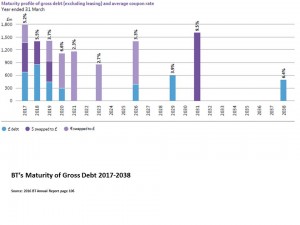Another month, guess what, take a lucky guess, it is the same old story, HM Government, spends more money than it receives via taxes and duties. Another deficit month, thus to bridge the gap, needs to borrow on the bond market.
In June 2016, the HM Government had to borrow money to meet the difference between tax revenues and public sector expenditure. The term for this is The PSNCR: The Public Sector Net Cash Requirement.
There were “only” 3 auctions of Gilts (UK Government Bonds) by the UK Debt Management Office (http://www.dmo.gov.uk/) to raise cash for HM Treasury:-
09-Jun-2016 0 1/8% Index-linked Treasury Gilt 2036 £902.6700 Million
07-Jun-2016 4¼% Treasury Gilt 2046 £1,7072030 Million
01-Jun-2016 1½% Treasury Gilt 2021 £3,1624950 Million
When you add the cash raised:-
∑(£902.6700 Million + £1,7072030 Million + £3,1624950 Million) = £5,772.368 Million
£5,772.368 Million = £5.7 Billion
On another way of looking at it, is in the 30 days in June, HM Government borrowed:-
£192 million each day for the 30 days.
We are fortunate, while the global banking and financial markets still has the confidence in HM Government to buy the Gilts (Lend money to the UK), the budget deficit keeps rising. What is also alarming, is the dates these bond mature 2021, 2036 and 2046. All long term borrowings, we are mortgaging our futures, but at least “We are in it together…”

